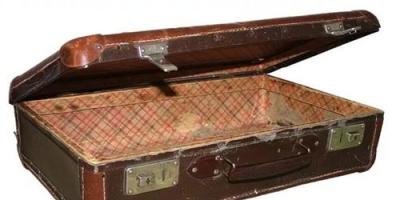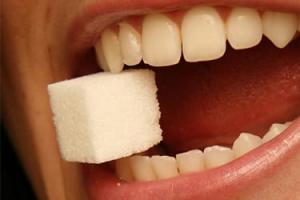Beginners who love woodworking will find our instructions useful, with a consistently described process for making carpentry clamps of several varieties. In it we will tell you what materials should be used for this and how to make a device that exactly suits your own needs.
Materials for body, stop and jaws
In carpentry, clamps are used to securely and carefully hold together several parts while they are being mechanically connected or while the glue dries. The pressing force should not be colossal; it is much more important not to damage the surface of the parts being connected. At the same time, the clamp must maintain high strength and be durable.
For the manufacture of clamp parts that are in direct contact with the workpiece, it is better to use hardwood. Ideally, these are bars and planks made of larch, beech, hornbeam or birch. This tree has a fairly high strength and at the same time is elastic, restoring its shape well. The hardness of such wood is usually higher than that of the processed parts, which can be compensated for by heels made of leather, light rubber, felt or softer wood.

Can be used as a frame for a clamp hardwood, and rolled metal. Corners or profile pipes fit well, but they need to be thoroughly cleaned, primed and painted in order to finished product there were no traces of rust left. To exclude accidental mechanical damage or pushing through the parts being connected, it is recommended to glue wooden strips over the metal elements of the clamp or pull a loose silicone hose.
Which screw and flywheel to use
Despite the not very high clamping force, ordinary studs with metric threads will not be very convenient for use as a clamp screw, unless very small. A small thread pitch will make the choice of free play tedious; among other things, the triangular profile is “eaten up” much faster.
It would be much more correct to purchase studs with trapezoidal or rectangular profile threads, otherwise called jack threads. The optimal pitch is about 2-2.5 turns per centimeter, this ensures good smoothness of adjustment and optimal tightening force for wooden parts.

Get studs, nuts and fittings the right type You can either contact the turner directly, or in a hardware store, including on the Internet. There is, however, one BUT: most factory products have a full thread, while a slightly different screw configuration is optimal for a clamp. Ideally, there are smooth pillars at the ends of the stud: about 20 mm long for the bearing (slightly thicker than the thread) and about 30-40 mm for the handle (slightly thinner or the same diameter).

The handle or handwheel can be made from either wooden block, or by drilling a hole in the side of the stud and inserting a steel rod into it as a shift lever, like on a vice.

Straight screw clamp
To make a simple clamp, you will need a frame in the shape of a U-shaped bracket. It can be made in two ways. The first is to connect three bars at right angles on a tongue-and-groove joint, strengthening it with glue and a pair of dowels. This option requires a fairly highly qualified carpenter: hemming and fitting must be done with high precision, because the load in these nodes is very significant.

The second option is somewhat simpler, but more expensive in terms of material consumption. You can cut the bracket from thick birch plywood by gluing 3-4 blanks 12-16 mm thick with Titebond wood glue.
When choosing the shape of the parts, keep in mind that the most reliable design will be one with external bevels for greater rigidity. The bracket stop and its opposite part, in which the clamping screw will be fixed, must be trapezoidal in shape. In this case, the inclined sides should diverge outward at an angle of approximately 30º greater than the straight line. Thickening in the middle part of the frame is also highly desirable.

To secure the screw, it is recommended to use fittings or nuts of the appropriate diameter, which are fixed in one of the “horns” of the clamp frame from the inside and further strengthened epoxy resin. If the bracket was assembled from bars, then you need to insert a screw into one of them before final assembly. If the frame structure is multi-layered, then the footers can be replaced with nuts that are glued into the cut of the central layer of plywood. Here it is important to monitor the direction of the screw axis and at the same time prevent glue from getting into threaded connection- Lubricate it well with grease.

At the point where the clamping heel is attached to the screw, some kind of swivel is needed so that the parts do not move when clamped. It is best to press a bearing matched to the diameter of the inner race onto the solid edge of the screw stud. For a reliable stop, clamp the pin into the drill chuck, and then use a triangular file and a hacksaw to cut a groove for the retaining ring. Next, in the block that serves as the supporting heel, you need to use a core drill to make a cylindrical groove and press a bearing with a pin into it, strengthening the fit with varnish or epoxy resin.

Adjustable universal clamp
Clamps with variable opening widths are more versatile in use; they are most often used when rallying furniture panels. To make such a clamp, you will need a calibrated strip of dry hardwood, ideally beech or ash. A constant profile size along the entire length and the complete absence of any defects are required. The pressing force that the clamp can withstand directly depends on the thickness and width of the slats.
So, manufacturing should begin by attaching a perpendicular stop to one end of the longitudinal rail. It is better to make it from two bars that fold and clamp the rail in two symmetrical grooves, or hammer it like a hammer. Thus, the blank for the clamp with a fixed stop acquires T-shape, and the length of the stop on the working side should be greater than the reach from reverse side no more than 3 times. The connection between the stop and the rail can be strengthened with furniture ties; it is also possible to connect it with 2-3 dowels and PVA glue.

The reverse part of the stop is designed to secure the bowstring. A straight steel bar with a diameter of 10-12 mm is ideal for it. The end of the rod should be threaded and spread between the end stops with nuts from the inside. Holes for the bowstring should be drilled as close as possible to the back edge of the stop. In this case, the distance from the edge should be sufficient so that the wood does not split. After installing the bowstring, it is necessary to mark a series of notches in increments of 15-20 mm on the end of the bar facing the clamped part, make slots up to 2 mm deep using a fitting hacksaw according to these markings and trim the notches with a knife.

Next, you should make a movable block of the clamp. A through eye of rectangular cross-section is made in it, the dimensions of which exactly correspond to the thickness and width of the longitudinal strip. It is ideal to hollow out a groove with dimensions 2-3 mm smaller, and then bring it to the desired shape square rasp. The bar should sit tightly in the block, but at the same time allow relatively free movement along the clamp and its tilt for locking on the notches. You also need to do this under the string through hole so that the rod is positioned strictly perpendicular to the rail, and the block slides freely along it with a slight backlash.

On the reverse side of the hard stop you need to fill another block, which will fasten the bar with the bowstring parallel to each other. To do this, you can use a small piece of a block in which a groove for the bar is made with a chisel and an incomplete hole is drilled for the bowstring. Dowels or bolts are used to secure the block. As for the clamping screw and heel, they are installed in the same way as a conventional clamp. It is enough to drill a through hole in the movable block not too close to the edge and glue a sleeve or nut into it from the inside. This way, when you clamp the part, the nut of the screw mechanism will rest against the wood and fit even tighter.
Angle clamp
The most difficult to manufacture can be called a clamp, which provides fixation of two parts at right angles. At the same time, it is the most useful and sought-after tool in a carpenter's workshop.
The basis for the corner clamp will be a piece of thick plywood. It is better to take a square board approximately 300x300 mm with a thickness of at least 14 mm. In the corner of the base you need to fix two blocks of hardwood, which for convenience we will call standard. These blocks must meet at right angles facing the center of the plywood board; the thickness of the blocks is at least 25x25 mm. Their fastening should be as rigid as possible: it is recommended to first glue the bars, ensuring their perpendicularity using a plumber's square, and then strengthen the connection with ties or bolts.

From the center of each block you need to draw a perpendicular line, coaxially with which the screw studs will be located. It is necessary to retreat from the bars a distance of 20-30 mm greater than the maximum thickness of the parts being pulled together. After this, two more bars are rigidly attached to the base parallel to the previous ones. It is advisable to glue the nuts in immediately, and then proceed with the thrust bars in the same way as with the reference bars: first position them on adhesive connection, and then strengthen with ties. For greater convenience, you can immediately screw the screw studs into the nuts.

After securing the thrust bars, all that remains is to press on the bearings secured in the movable blocks. The cross-section, dimensions and material of the latter must be similar to the standard bars. Finally, you need to fill the handles or insert the flip levers and trim off the excess base of the clamp, removing the protruding corners for free rotation by the screw handles
Custom clamps for specific applications
In any carpentry workshop, homemade clamps show themselves to be more adapted to local working conditions than those purchased in a store. A wide range of variations of the three designs described above can be used.
For example, on one rail you can attach not one, but two adjustable blocks for positioning parts at a large distance. Such a tool will be very useful, for example, when assembling door blocks.

Instead of a handle, you can weld a regular hex head from a bolt onto the stud. This is relevant if, when assembling parts, several clamps need to be frequently clamped, released and rearranged. In this case, it will be convenient to rotate the clamping screw using a socket head with ratchet mechanism or even a screwdriver.

To assemble products of complex shapes, you can make clamp stops and movable blocks of a more complex configuration, which are well suited for working with irregularly shaped parts.
Clamp (German Schraubzwinge, from Schraube - screw and Zwinge - vice) - a tool used to fix any parts or materials during processing: cutting, gluing, joining, drilling, welding. Clamps are made from various materials: metal, plastic, wood and come in different designs: screw, lever (quick-clamp). Clamps are used for carpentry and plumbing work. Clamps for metalwork and welding work usually made entirely of metal. Clamps for carpentry can be made of metal, wood and plastic.
Types of clamps:
F - Shaped Clamps As a rule, they consist of a metal bus on which a fixed jaw and a movable jaw are installed. Sometimes the fixed jaw is an extension of the tire. A clamping screw with a wooden, plastic or metal handle is installed on the movable jaw.
N and the movable jaw can be equipped with a quick-clamping mechanism, which allows you to quickly fix the material. F - Piher shaped clamps with a special clamping mechanism allow you to fasten materials with high force up to 10,000 N. The double clamping screw is protected from dirt.Double clamping threaded screw - the rotational movement turns into a translational one, which prevents the workpieces from moving when they are clamped.
To fasten “delicate” materials that do not require strong clamping force, use clamps with wooden jaws on which cork pads are glued. They have a wide range of thicknesses of bonded materials.

G - Shaped clamps– the tire, upper and lower jaws are a single solid-cast structure; a clamping screw is installed on the lower jaw. The main advantage is the absence of backlash in the jaws. The disadvantage of these clamps is the small range of thickness of the materials being fastened.

Angle clamps- allow you to clamp parts at right angles. The corner clamp consists of a body and one or two screw clamps, on which the clamping heels are installed.

End clamps (edge clamps)- allow you to press the material to the end of the part. The design is similar to G-shaped clamps, but I have two additional clamping screws.

Quick clamps – have various designs, the most common quick-release clamps consist of a metal bar on which plastic jaws are mounted. The movable jaw is pressed using a lever mechanism; you can also move the fixed jaw to the opposite end of the tire and use the clamp as a spacer.

Band clamps - The clamp design has a metal or synthetic tape and a clamping screw that tightens the tape. Band clamps are used for assembling and gluing oval, round and polygonal structures
Corner clamp, Piher A-30, 30mm
Corner clamp, Piher A-30. The thickness of the clamped workpieces within the block is from 0mm to 80mm outside the block - from 0mm to 27mm. The height of the jaws is 30mm. Weight - 1.05 kg. The block material is light cast iron. The screw material is steel. Plastic handle for easy screw tightening. Production - Piher (Spain)
RUR 3,390
Clamp Piher Maxi F, F-shaped, 9000N
Piher Maxi F clamps with clamping force up to 9000N (900kg)!Opening width - from 20cm to 150cm. Weight - from 2kg to 5kg. Clamp depth - 12cm. Jaws made of durable malleable cast iron. Powerful tire made of rolled steel with a section of 35x8mm. The special clamping screw is completely protected from external influences. Double clamping threaded screw - the rotational movement turns into a translational one, which prevents the workpieces from moving when they are clamped. Articulated, removable handle. Pmovable sponge equipped with a roller.Grooves for clamping round workpieces.Production - Piher (Spain).
Many home craftsmen have questions about clamps. What are they used for, how are they used and which is better? For those who do not know, it is worth noting that a clamp is a clamp for temporarily positioning parts for their subsequent fastening. There are clamps different types and are intended for various tasks. Those who do carpentry know that the more you use these clamps, the more applications they have. Therefore, the workshop should always have reliable and easy-to-use clamps various types and sizes.
Carpentry clamps - general description
Carpentry clamps are made from wood and metal. Having installed such a device on the surface, you can work with both hands.
The simplest manual the clamp consists of a main frame and moving elements, which are equipped with clamps in the form of screws or levers. They not only fix the moving part, but also regulate the compression force.
There are lever devices that are based on both axle and lever systems. They are most often called clamps or clamps. With their help you can quickly fix the workpiece. All you need to do is apply a little force to move the handle, and a decent clamping force will be created instantly.
Types of metalwork and carpentry clamps




















Clamp models differ in mechanisms, therefore they are divided into the following classes:
- corner;
- installation;
- screw;
- manual;
- quick-clamping
When choosing such a device, you need to pay attention to the distance to which the clamps are moved apart and to the working stroke. The most practical are the clamps that have the highest indicators listed above. With their help you can work with large-sized products (from 20 to 350 mm).
Not everyone can afford to equip their workshop with a full set of carpentry clamps. There are quite a lot of types and sizes of them. Therefore, it is worth considering only the most common types.
F-clamps
 These devices are a combination of a fixed jaw at the end of a flat steel base and a sliding adjustable jaw. F-shaped clamps have a deep throat, which allows you to fix the part far from its edge. The sliding head may have an adjustment screw or an eccentric lever installed on the jaw of the clamp.
These devices are a combination of a fixed jaw at the end of a flat steel base and a sliding adjustable jaw. F-shaped clamps have a deep throat, which allows you to fix the part far from its edge. The sliding head may have an adjustment screw or an eccentric lever installed on the jaw of the clamp.
Clamps are divided into two types:
- Light duty (for light use). Such fairly thin and narrow devices They don't weigh much and don't take up much space.
- Heavy duty (for more difficult work).
F -shaped clamps simple, therefore quite cheap. However they are not very convenient to work with, since you have to hold them with both hands and then twist them.
Band clamps
 It is difficult to imagine working in a carpentry workshop without band clamps. This device is based on a nylon or leather belt, with the help of which pressing force is transmitted to the mating parts.
It is difficult to imagine working in a carpentry workshop without band clamps. This device is based on a nylon or leather belt, with the help of which pressing force is transmitted to the mating parts.
Band clamps will provide uniform pressing force and strong fixation to any workpiece. They can be used to make or repair frames, wooden chairs, tabletops, aquariums and much more. With the help of this universal device It is convenient to connect, drill and glue fixed parts of the structure at a precisely specified angle.
The length of the tape in the belt clips is such that it can be wrapped around the body of any large-sized structure, while tightening all connections at the same time. There is no risk of damaging the parts being tightened, since the metal parts of the band clamp will not touch them.
However, in some cases it is not very convenient to work with this type of clamp. This is due to the fact that when installing a corner on one side, it may fall on the other. In addition, it is impossible to increase or decrease the pressure on one specific plane or axis.
When using tape without corners, the edge of the workpiece can be easily damaged. Therefore, in addition to the band clamp It is recommended to purchase special corners, which will significantly expand the functionality of the clamp.
Pipe clamps
 Pipe clamps are made from water pipes½ or ¾ inch, onto which a fixed stop and a movable jaw are screwed. The device can be made to any length by cutting a thread at one end of the pipe and screwing a stop onto it. The clamp can be moved to a pipe of a different length or removed at any time.
Pipe clamps are made from water pipes½ or ¾ inch, onto which a fixed stop and a movable jaw are screwed. The device can be made to any length by cutting a thread at one end of the pipe and screwing a stop onto it. The clamp can be moved to a pipe of a different length or removed at any time.
You can buy threaded pipes at any hardware store. In this case, you can purchase not only ordinary pipes, but also elements with electroplated. Movable The jaw of the clamp will glide best on black pipes, which are also quite cheap. The advantage of galvanized pipes is that they are protected from corrosion. In addition, in contact with the glue, unlike simple pipes, elements with such a coating do not leave dark spots on the workpiece.
To protect protruding threads, you can use special removable caps. To prevent long clamps from bending when tightened, it is recommended to use more rigid elements with a diameter of ¾ inches.
If you are gluing a large structure and do not have a clamp of the required length at hand, you can use two short devices. To do this, they will need to be connected with a coupling.
G-clamps
 This type of clamp is used for most work, so it is recommended to purchase as many of them as possible. They are different sizes, but most often devices with a working width of 100 and 150 mm are used.
This type of clamp is used for most work, so it is recommended to purchase as many of them as possible. They are different sizes, but most often devices with a working width of 100 and 150 mm are used.
G-clamps must be mandatory good quality , since the brackets of cheap clamps bend and are quite difficult to work with. However, there are quite cheap lightweight clamps of excellent quality on sale.
There are specialized G-shaped clamps with increased grip depth. With their help, you can reach places that are inaccessible to conventional clamps. To fix the overlays, edge clamps are produced that can press the workpiece in two directions at once.
Devices are also divided according to the type of material they are made of:
- Forged steel clamps allow for high compression forces. Therefore, they can be used even during welding to fix steel beams.
- Cast iron clamps are less durable, as brittle cast iron can burst due to excessive force.
When choosing a G-clamp, you need to make sure that the screws are large, the surfaces are flat, and the driver is thick and has a rounded end.
Carpentry clamps should be maintained in the same way as other tools. The stops, rods and jaws of the devices must be cleaned immediately after gluing. Dried glue is difficult to remove and leaves nicks on wooden parts. To ensure that the clamp screws rotate smoothly, it is recommended to lubricate them with wax. Oil and silicone lubricant It is better not to use, as they may stain the product.
Being practically “one hand” for a craftsman, clamps can help out if any part needs to be fixed for processing, “held”, and both hands are busy. It is difficult to do without them during assembly homemade furniture or gluing any wooden parts that need to be pressed tightly together and connected. Therefore, for carpentry and other works It is recommended to have carpentry clamps of various sizes and types, without forgetting to properly care for them.
When performing many jobs, it becomes necessary to fix the workpiece in a certain position. Clamps and clips are used for this purpose. We present the main types of these tools in this review.
There are a great variety of different clamps. To carry out basic work in the home workshop, it is enough to have classic screw clamps and practical quick-release clamps. But if there is a need to process some workpiece of an unusual shape, then you will need a whole set of special clamps.
Classic: screw clamp
Screw clamps are distinguished by shape - some resemble the Latin letter F, others resemble the letter G. F-clamps consist of a metal bus with fixed and movable jaws installed on it. Sometimes the stationary sponge forms a single whole with the tire. The movable jaw is equipped with a clamping screw with a wooden, plastic or metal handle.
G-clamps are designed so that the tire, upper and lower jaws are a single solid cast structure. The clamping screw is installed on the lower jaw.
For high-quality products, the pressure jaws are equipped with removable plastic covers that prevent the formation of dents on the soft materials, and for optimal fixation the head on the clamping screw is made movable.
A good clamping screw is always galvanized and has a trapezoidal thread. A good handle - made of wood or plastic - should not slip in the palm of your hand.
Grooved edges on inside tires provide reliable fixation of the clamp when compressed.

Quick clamps
A traditional screw clamp requires two hands to secure. Sometimes you even have to resort to the services of an assistant to fix the workpieces in the desired position. It is especially problematic to secure something while standing on a stepladder. But quick-release clamps can be opened and closed with one hand without intercepting the handle.
Quick-release clamps open and close by pressing the levers with one hand.  Clamps of this type have different designs; the most common quick-release clamps consist of a metal bar on which plastic clamping jaws are installed.
Clamps of this type have different designs; the most common quick-release clamps consist of a metal bar on which plastic clamping jaws are installed.
Practical accessories
Wolfcraft offers useful devices, with which you can turn quick-release clamps into multifunctional tools. Some devices, such as bench clamps, can also be used as regular quick-release clamps.
Clamps for all occasions
In addition to screw and quick-release clamps, there are other models, some of which are good for everyone to have home handyman. Ratchet clamps are indispensable in modeling and when working with small workpieces where strong compression is not required. Anyone who often stands at a workbench will benefit from clamps secured in the holes on the working surface of the workbench. Lever clamps are used in cases where very strong compression is required. They are significantly stronger than spring steel clamps, but require more space to install.

Pincer clamps with ratchet mechanism
1. The ability to finely dose compression and low weight make these clamps indispensable for making small crafts.
2. Ratchet clamps are inexpensive. They can be used to join very thin materials with greater or lesser compression.
Spring steel clamps
Spring steel clamps (pictured with a grip for metal pipes) have a certain flexibility during compression and therefore will firmly hold the workpieces even when the structure is shaken.
Lever clamps
Lever clamps are professional tools that provide extreme compression.
Spring clamps
For gluing small workpieces without strong compression, it is best to use simple and inexpensive spring clamps.
Clamps for workbenches
Convenient clamps for workbenches are installed in 20 mm holes on the working surface.
Two or more clamps can be used to securely secure the workpieces being processed.
Subspecialists
 If you need to make items unusual shapes or perform other non-standard work, you cannot do without special clamps. Some of them are quite inexpensive, while others will have to pay a lot of money, for example, for clamps for fixing edge strips when making furniture. But if such work has to be done only occasionally, then instead of an edge clamp, you can use wooden wedges, as described in the information on the right.
If you need to make items unusual shapes or perform other non-standard work, you cannot do without special clamps. Some of them are quite inexpensive, while others will have to pay a lot of money, for example, for clamps for fixing edge strips when making furniture. But if such work has to be done only occasionally, then instead of an edge clamp, you can use wooden wedges, as described in the information on the right.
Corner clamps: for quick and easy fixing of boards and frames at an angle of 90 degrees, use corner clamps. In addition to corner joints, they can also be used to make T-shaped connections.
Wooden clamps: These tools are used for gluing all types of laths, baseboards and edgings for which a steel clamp is not suitable due to its weight. In wooden clamps, compression occurs not through tightening the screw, but by pressing a lever located on the side. The pressure is applied directly by hand to the lever and can therefore be dosed more carefully than when working with screw instruments.
Tape clamps: these devices are used to glue drawers and furniture bodies. These clamps are also used in the manufacture of items A of non-standard H shapes, for example, for hexagonal furniture bodies. The tools provide uniform pressure on all joints of the elements.
Wedges will help
When gluing edge tape to a furniture piece, you can do without a special clamp. Take two wooden wedges and insert their sharp ends towards each other into the space between the tire of the fixed screw clamp and the edge tape. By moving the wedges towards each other, you can apply the necessary pressure on the edge.
Cheap, but not cheerful
Poor quality materials often fail high pressure. The tire on the instrument in the photo is bent due to tension. The clamp can still be used, but the workpiece will be pushed out from under the clamping jaw due to the broken geometry.
Spare parts
Even the most good clamp wears out over the years. However, in this case it is not always necessary to buy new tool. Many well-known manufacturers offer spare parts for their products. In the end, it always pays to buy high-quality products.








